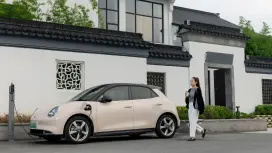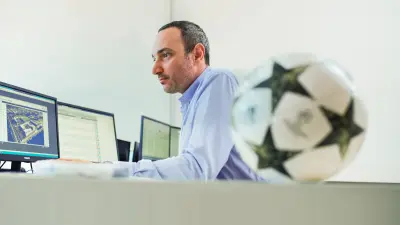eAxle: the race to develop the best electrical powertrain
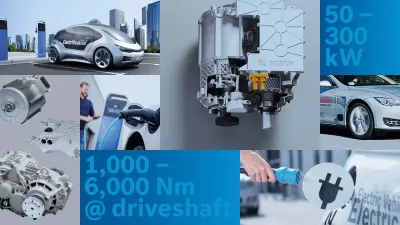
The race is on to get the best electrical powertrain to market. Bosch is hoping that its eAxle will attract a broad customer base. How can this be accomplished? Two experts, two points of view.
400 million euros
is the amount Bosch invests each year to achieve a breakthrough in electromobility
Three become one
The Bosch eAxle is an all-in-one electrical powertrain. Its components — electric motor, power electronics, and transmission — are combined in a single compact system. That reduces the number of parts, saves space, and makes the powertrain unit less complex — all of which enhances efficiency and cuts cost.
Thanks to the high flexibility of the components, the commercial potential of the eAxle is huge. The eAxle can be installed in diverse vehicle classes, and can be adapted quickly and easily to meet varying requirements — something that may considerably reduce automakers’ costly development times in the future.

A giant leap forward?
The eAxle is a new electrical powertrain. It is a central pillar of Bosch’s drive to become successful in the mass electromobility market by 2020.
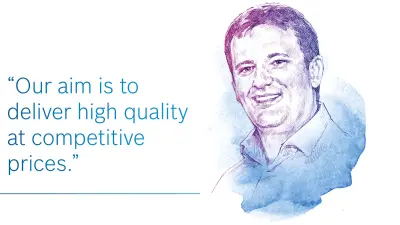
Josef Angerer,
in charge of manufacturing coordination for the eAxle. Based in Ludwigsburg, Germany
“Our objective is clear: to produce and market the eAxle in numbers high enough to serve the mass market. We aspire to deliver high-quality products at competitive prices. The eAxle is being manufactured in Europe and Asia. Once demand rises, it will be manufactured in North America as well. Currently, our focus is firmly on China, the world’s biggest growth market for electric vehicles. My job is to coordinate manufacturing of the eAxle. In other words, I’m the interface between development on the one hand and the manufacturing plants, logistics, and purchasing on the other. Most recently, I
worked in the Gasoline Systems division’s benchmarking office, a job that took me to plants all over the world. I used to work for a transmissions manufacturer, and the expertise I acquired there stands me in good stead in my current job. At various plants, I was responsible for manufacturing operations. For most of us, the task is to transfer the skills and expertise we have gained in traditional areas to new fields of business like electromobility. Someone who used to plan assembly lines doesn’t lose those skills. With the right training, they can apply their knowledge to new products.”
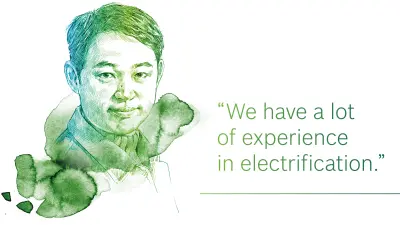
Jie Cheng,
Product manager for the eAxle. Based in Shanghai, China
“We’ve been manufacturing individual components for electric vehicles for years, and already have a lot of experience in electrification and electric drive in cars. I wouldn’t say the concept of integrating powertrain components is entirely new. But what sets us apart from other manufacturers is our ability to mass-produce. That gives us a decisive edge. Our plant in Germany has the necessary
commercialization know-how; our team in China has a strong network and local expertise as well as years of experience in the mass production of electric motors and power electronics. China is a market boasting extremely dynamic growth, and it is difficult to make reliable forecasts. But it is the right place to consolidate and expand our pioneering role in electromobility.”
Summary
In commercial terms, Bosch is placing great hopes in its new eAxle. The company is banking on its outstanding skills in international manufacturing, and its ability to produce top quality in large volumes and at competitive prices.
